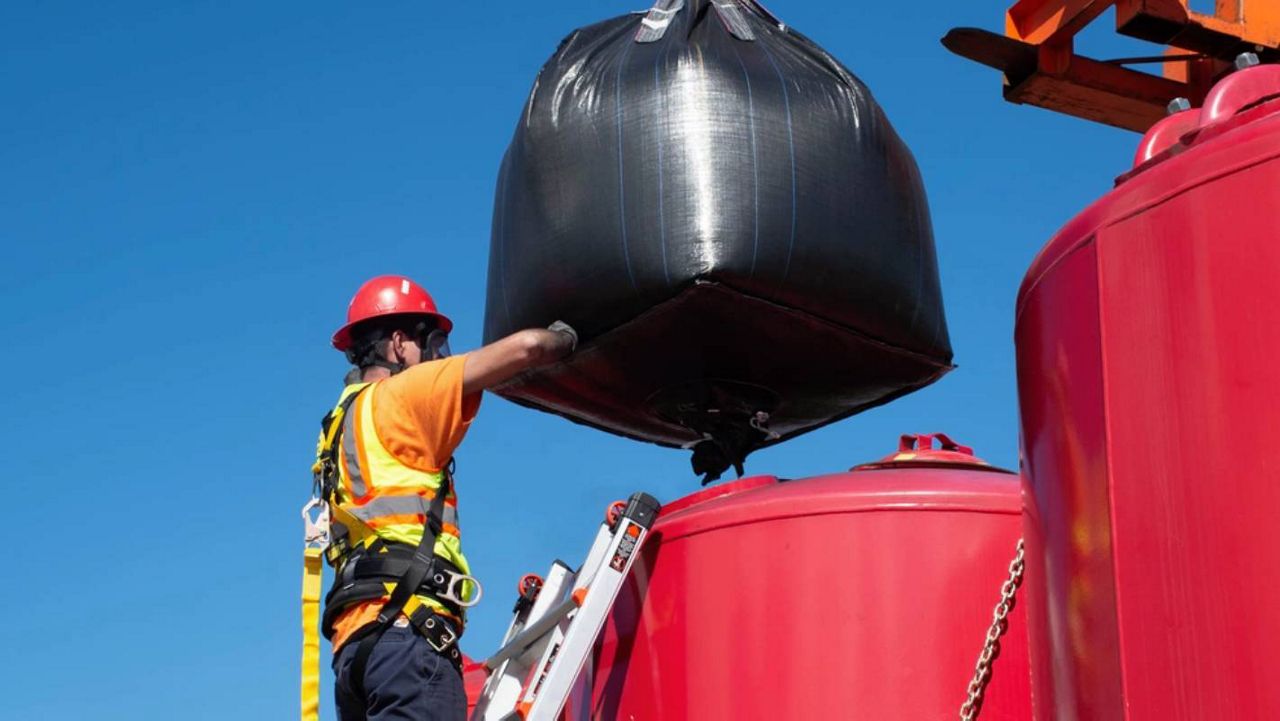HONOLULU — The earliest date for people who live near Pearl Harbor to have safe drinking water in their homes will be at the end of the month, while most will have to wait at the least until February.
Navy officials said previously during a briefing with state lawmakers on Dec. 29 that residents would have access to clean drinking water in their homes by the New Year. In a press release sent on Jan. 2, the Navy said heavy rains had delayed the flushing of water lines.
“Families can move back into their homes at any point they wish,” said Marissa Huhmann, a public affairs officer for the Joint Information Center, in a statement sent to Spectrum News Hawaii. “That being said, approximately half the families have chosen to remain in place while the other half have chosen to relocate to temporary lodging.”
Huhmann said there are approximately 8,000 homes on the Navy’s water system.
“The Navy is working tirelessly with partners at local, state, and federal levels to put people back in their homes with safe drinking water on a conditions-based timeline,” Huhmann added.
The flushing of water lines started at the Pearl City Peninsula military housing neighborhood on Dec. 20, according to another Navy press release; this neighborhood has an estimated date to return to housing on Jan. 28. The process has also begun on several other neighborhoods, which all have estimated return dates in early February, including Red Hill Housing, NEX Moanalua Terrace, Hale Moku Hokulani, Hickam, Hale Na Koa, Onizuka Village, and Ford Island. Other neighborhoods have estimates later in February, while some still have no estimated date.
Flushing was already done for the water distribution system at Aliamanu Military Reservation, which is one of the neighborhoods closest to the Red Hill shaft, and afterward the Navy sampled the water. However, on Jan. 15, the Navy released a statement saying the area still did not meet safe drinking water criteria. The samples detected Total Petroleum Hydrocarbons-Diesel (TPH-d) levels at 620 parts per billion. In order to move to the next step in the flushing process, the DOH requires the levels to be 200 parts per billion or less. Now, the water distribution system will be flushed again.
The flushing process is aimed at cleaning that Navy’s fuel-contaminated water in order to meet acceptable safe drinking standards for residents in Joint Base Pearl Harbor Hickam housing communities. The plan was finalized by the Interagency Drinking Water System Team, and includes the Hawaii Department of Health, U.S. Environmental Protection Agency, the U.S. Army and the U.S. Navy.
“Under this approach we are ensuring that the drinking water testing is as thorough as possible, so residents can feel reassured that the water used by their families is fully safe,” said EPA Region 9 Administrator Martha Guzman in a Navy press release.
The plan involves breaking up homes and non-residential buildings around Pearl Harbor into “zones,” and samples of the water distribution system for each zone are taken and sent to the mainland for testing, according to a Navy press release sent on Jan. 13. The interagency team then examines the results and determines whether the zone can begin flushing.
The Navy said the water will be filtered with an active carbon system and discharged into storm drains with Hawaii DOH and EPA oversight.
Flushing each zone’s distribution system will take between 12 to 17 days. The water is again tested, and if the samples do not meet safe drinking water levels, the zone is flushed and sampled again. If the water still does not meet safe levels, the work will be paused so that the agency can determine a new plan of action.
For each zone, once it has been determined that the distribution system meets safe drinking water levels, then individual homes and buildings, including workplaces, schools, and medical facilities, will be flushed by trained teams.
A representative sample of homes and non-residential buildings will be tested. The interagency team will examine the results and once they all agree that the samples meet safe levels, a recommendation to amend the health advisory issued by the Hawaii DOH will be made. This process will take 25 to 27 days. If samples do not meet safe drinking levels, then the area will be flushed and sampled again.
The Hawaii DOH has had an advisory in place since November that says residents and others located in the Navy’s Joint Base Pearl Harbor-Hickam area should avoid using the water for drinking, cooking or brushing their teeth. The DOH will review the samples and if they approve they will amend the drinking water advisory to be “fit for human consumption.” The Navy said it would then post the complete test results for all of that zone’s flushing and sampling activities.
In late December, the Navy acknowledged that fuel leaked from Red Hill Storage Facility into the ground in May and November 2021. The Navy’s Red Hill Storage Facility was built underground during the 1940s in order to store jet fuel for military purposes, and it is located about two miles northeast of Pearl Harbor. On Dec. 10, it was confirmed that the Red Hill Shaft was contaminated with petroleum levels 350 times the safe drinking limit.
Residents have said they got sick from drinking and bathing in the water, experiencing symptoms that include rashes, vomiting, headaches, nausea and hair loss. Lawsuits have been filed on behalf of military housing and civilian residents who have left their homes due to the contaminated water.
The Navy said on Jan. 10 it would comply with a Hawaii DOH order that requires them to remove fuel from the tanks at the Red Hill Storage Facility.




